Contents
More and more often people are convinced that radish is a very useful root vegetable, and it can be used not only as a cure for colds and coughs. Therefore, there is a need to store radish. But how to do it right, and most importantly, where to leave the radish for the winter?
Harvest
Only radish grown in the right conditions and with appropriate care is well stored. For this purpose, the plant is fed with potassium and provides the culture with a sufficient amount of moisture. Fertilizers of natural origin, such as manure, should not be used. Otherwise, the shelf life of the root crop will be significantly reduced.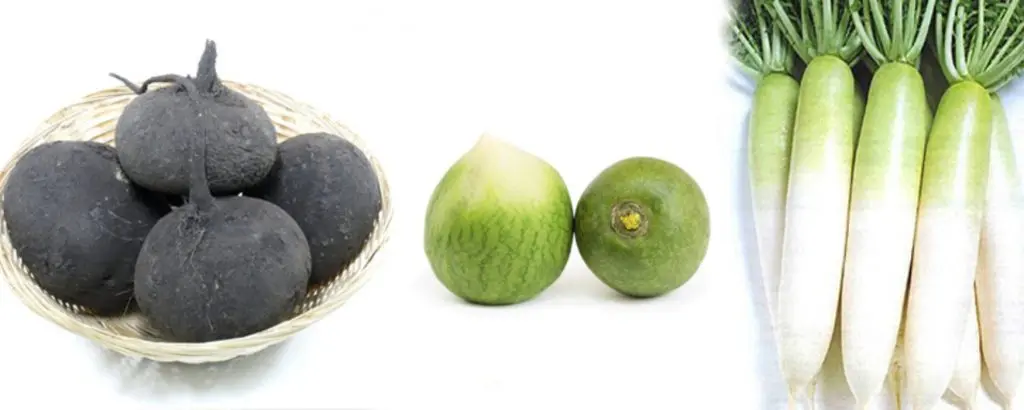
The harvest of winter varieties of vegetables is harvested in late September – early October, that is, before the appearance of the first severe frosts. In this case, the day should be without precipitation. If the collection has not yet taken place, and the air temperature has already dropped to -5 °, you can forget about long-term storage of radish. Beaten by frost, it will quickly deteriorate even under ideal storage conditions. However, it is also not worth delaying the harvest, because, after overripe, the vegetable accumulates a large amount of fiber, which makes the fruit hard and tasteless. Sometimes the radish becomes completely unsuitable for eating.
How to save the harvest? In addition to timely harvesting, it is also necessary to carry it out correctly and prepare root crops for storage.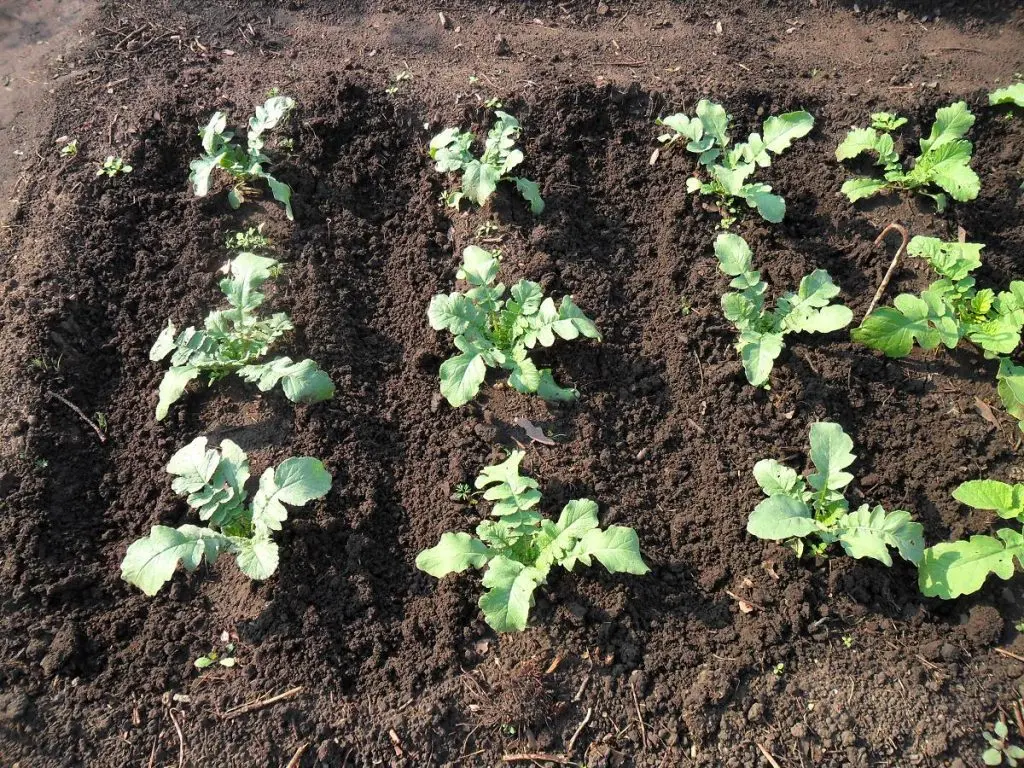
After digging the vegetable, you need to get rid of the remnants of the earth and remove the tops (unscrew or cut off). The spine must be left about 0,02 meters, no more. In this case, all manipulations should be done very carefully so as not to damage the vegetable itself.
After all, such a radish becomes very vulnerable to pathogens of various diseases and fungi. And this despite the fact that all cuts are quickly tightened with a thin skin.
The harvested crop must be well dried. This component of preparing the crop for storage is especially important if the fruits were harvested in rain or in conditions of high humidity. Indeed, in this case, the culture is susceptible to mold attack. It is necessary to dry the root crops in the shade, direct sunlight provokes the withering of the radish.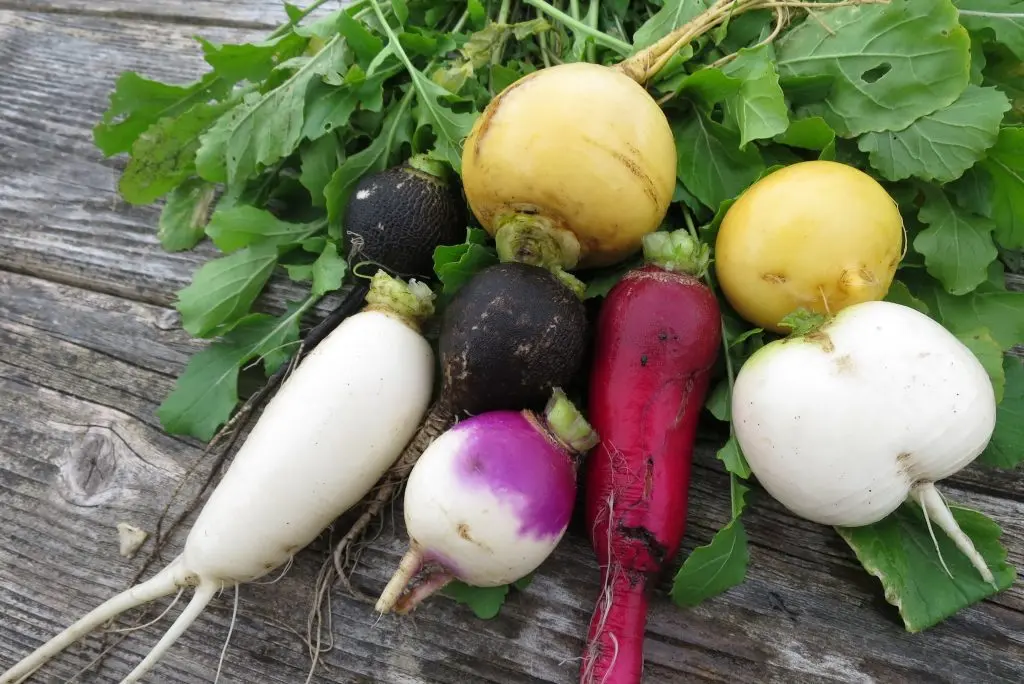
Next, the vegetables are sorted, separating the diseased, lethargic, wormy and germinated. For long-term storage, only healthy and powerful fruits are suitable. It is desirable that they have a similar size. Small, overripe and scratched vegetables are best consumed immediately. You can store them in the refrigerator in a bag with holes made in it. Thus, the freshness of the plants will remain for about a month.
How to store radishes harvested in autumn? A cellar prepared for this purpose will help preserve the taste and freshness of the fruits, as well as their beneficial properties.
It is necessary to prepare the cellar 14 days before the planned harvest. It takes 2 weeks to establish the microclimate in the room.
Video “How to properly store radish at home”
From this video you will learn how to properly store radish at home, on the balcony, in the apartment.
Storage in the cellar
Today there is a variety of varieties of radish, as well as a number of devices and technologies for its cultivation. Because of this, crops can be harvested from late spring to late autumn. Therefore, the question is: “How to store radish in winter?” becomes more and more important every day.
You can store the crop of the plant in the cellar, basement, refrigerator, and even in the house, but in order to keep vegetables fresh for as long as possible, you should opt for a cellar or basement.
Preparation of a cellar for long-term storage of radish includes:
- Drying the room, its ventilation and disinfection. Processing is best done with bleach in a proportion of 2 kilograms per bucket of water.
- Eliminate cracks and other openings in the cellar. This will help protect the plants from frost and rodent attacks. After all, unfortunately, radish does not belong to those vegetables that quickly recover after frost. All fruits beaten by low temperatures will simply have to be thrown away.
- The ventilation of the room will need to be thoroughly cleaned, its functioning checked, and the hole itself covered with a mesh so that dust does not get inside.
- The earthen floor must be covered with dry sand. The layer thickness should be up to 0,05 centimeters.
- The air temperature in the room should not exceed 1° – 2°, and the humidity should be within 90%. In a cellar with dry air, it is worth placing buckets of water.
- If parasites live in the room, get rid of them as soon as possible. The easiest way is to seek help from professionals who will do everything quickly and efficiently. However, you can destroy pests yourself. It is enough to purchase an insecticide, or a dust or other chemical substance intended for pest control, at specialized points of sale.
- After processing, you need to conduct a thorough cleaning, inspecting the walls in search of mold. If it is found, it is worth processing the walls. After that, they must be plastered and coated with antifungal paint. However, this is not enough. We need to find the cause of the mold. Often this is high humidity. Heaters will help regulate this parameter.
- The preparation of the premises is completed with a comprehensive cleaning.
All the described activities are carried out annually before the planned storage of root crops. After all, the quality and safety of the radish directly depends on the state of the cellar.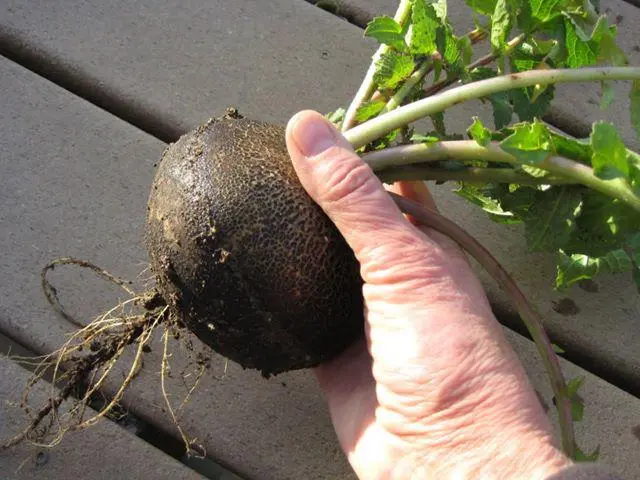
When laying plants for storage, it is worth considering the proximity of vegetables and fruits. So, apples and radishes cannot be in the same room. Fruits absorb odors and lose their taste. At the same time, apples are a source of fungi harmful to radish. These microorganisms reduce the keeping quality of vegetables. Because of this, storing radishes next to pears is also not recommended.
Storage at home
You can store radish even if you do not have a cellar. After all, it is easy to place a crop for the winter period even on a glazed balcony in an apartment. Vegetables should be placed in a bag with ventilation holes made in it and wrapped with a blanket in case of severe frosts. You should also control the temperature on the balcony. Under no circumstances should temperatures be allowed to fall below zero.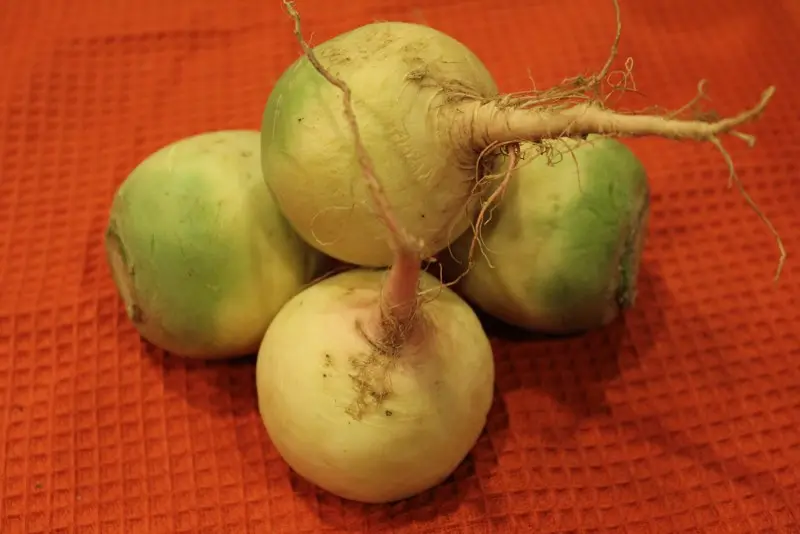
It is also possible to store radish of different varieties in a different way: it is enough to place vegetables in a box and cover them with wet sand. Such a “coating” should be moistened periodically, but in moderation. Too wet sand will provoke the germination of root crops. The most comfortable temperature, which ensures long-term preservation, is 1 ° – 3 °.
In addition, if the crop is small, then it can be successfully stored in the refrigerator. However, this preservation can last for a maximum of about a month. At the same time, the vegetables are sorted out and placed in a plastic bag with holes.
Next, the vegetables are placed in the refrigerator, in the vegetable tray. Periodically it will be necessary to check the safety of such blanks and their condition.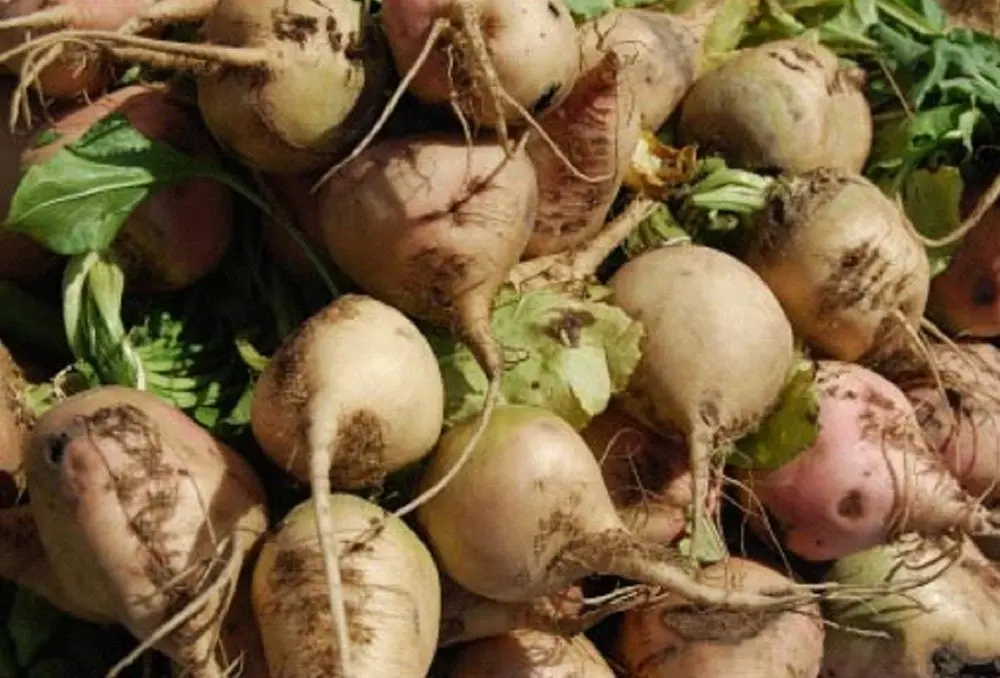
So, radish is becoming more and more popular every day. The main reason for this phenomenon is the wide range of applications of the root crop. Harvesting radish, as well as its storage, resembles similar procedures for beets. In order for root crops to be stored for as long as possible, it is necessary to properly collect and prepare them. You can save vegetables for the winter both in the basement or cellar, and in apartment conditions.
Video “How to keep a radish in the cellar”
From this video you will learn how to properly store vegetables in the cellar.









